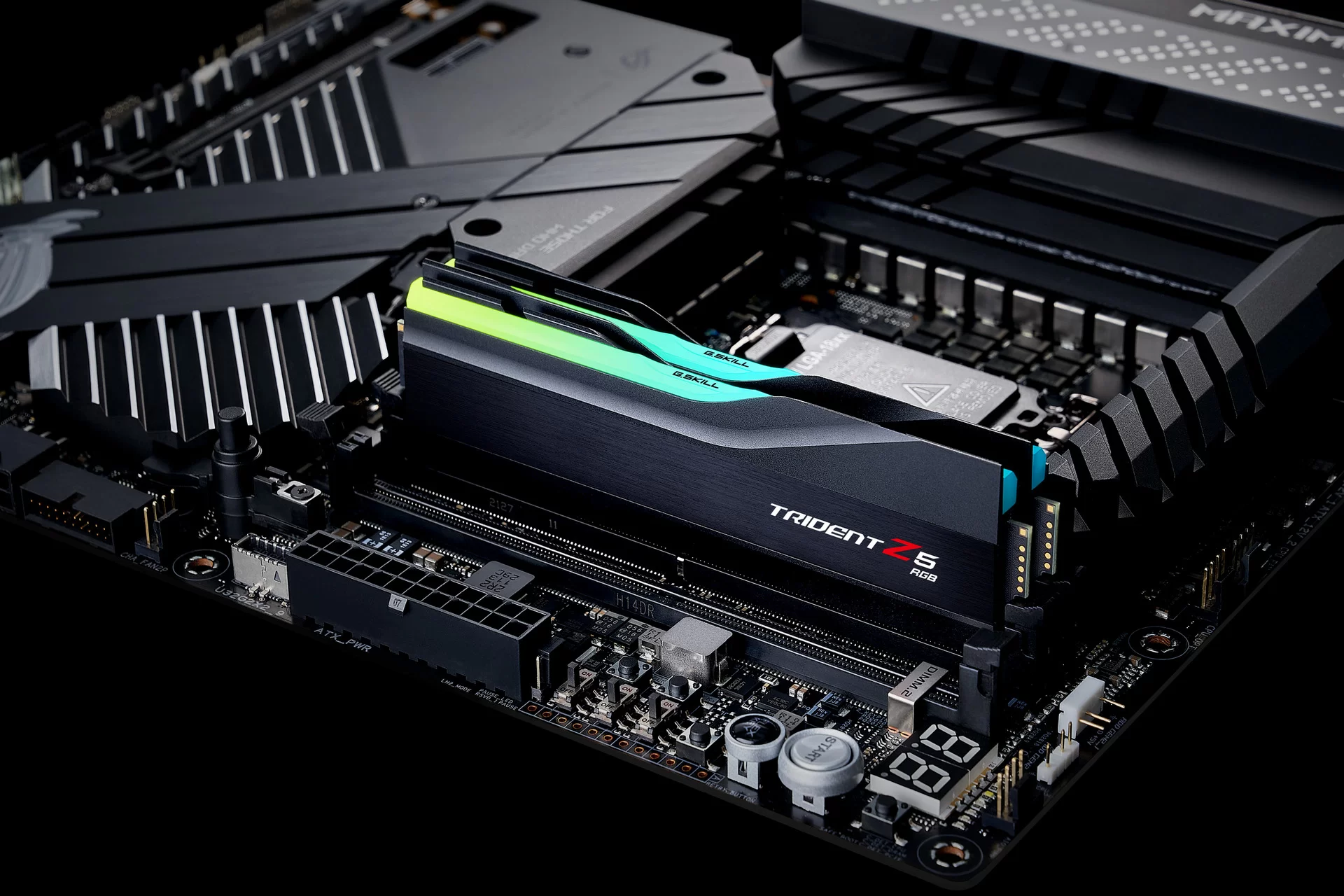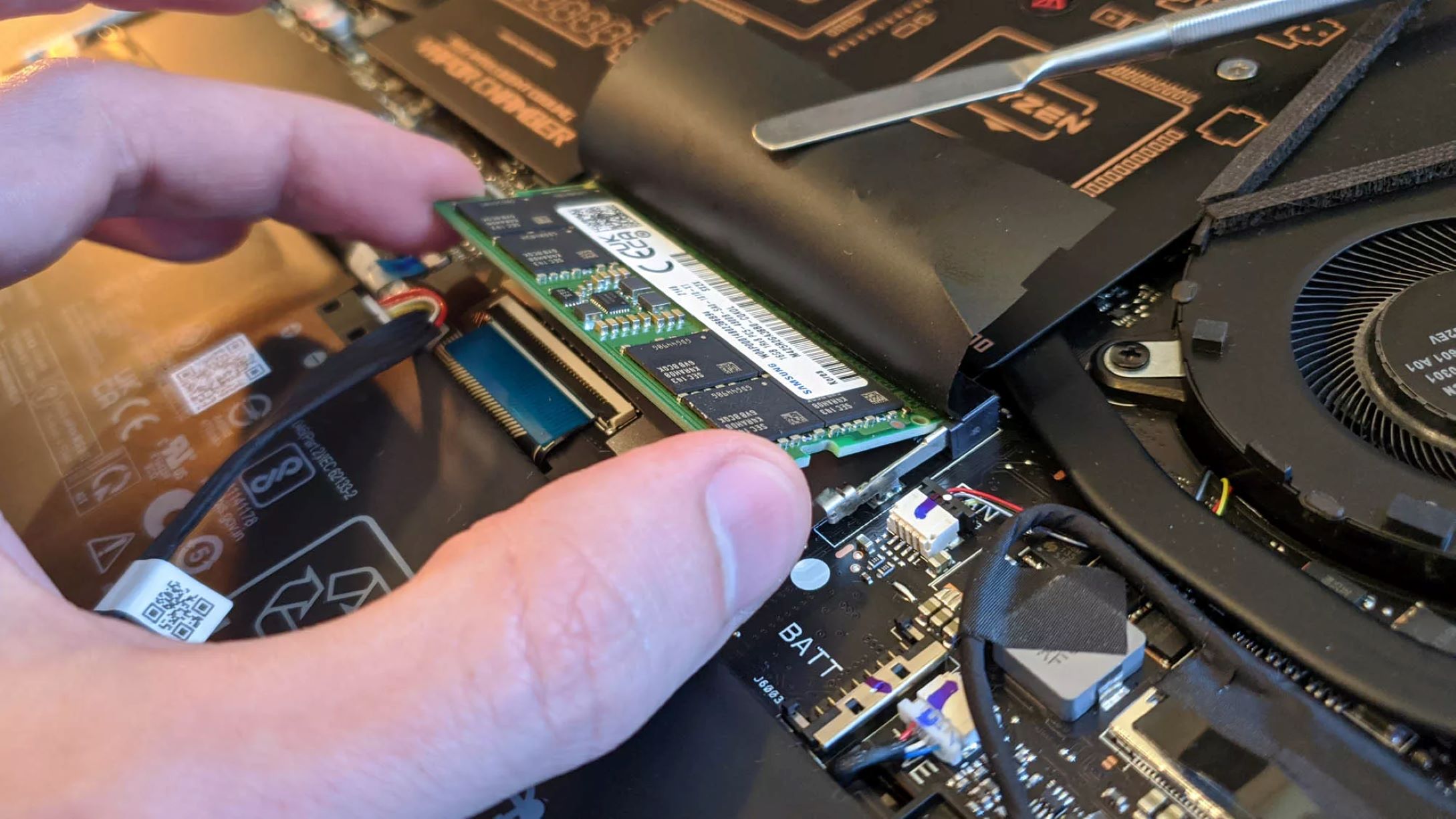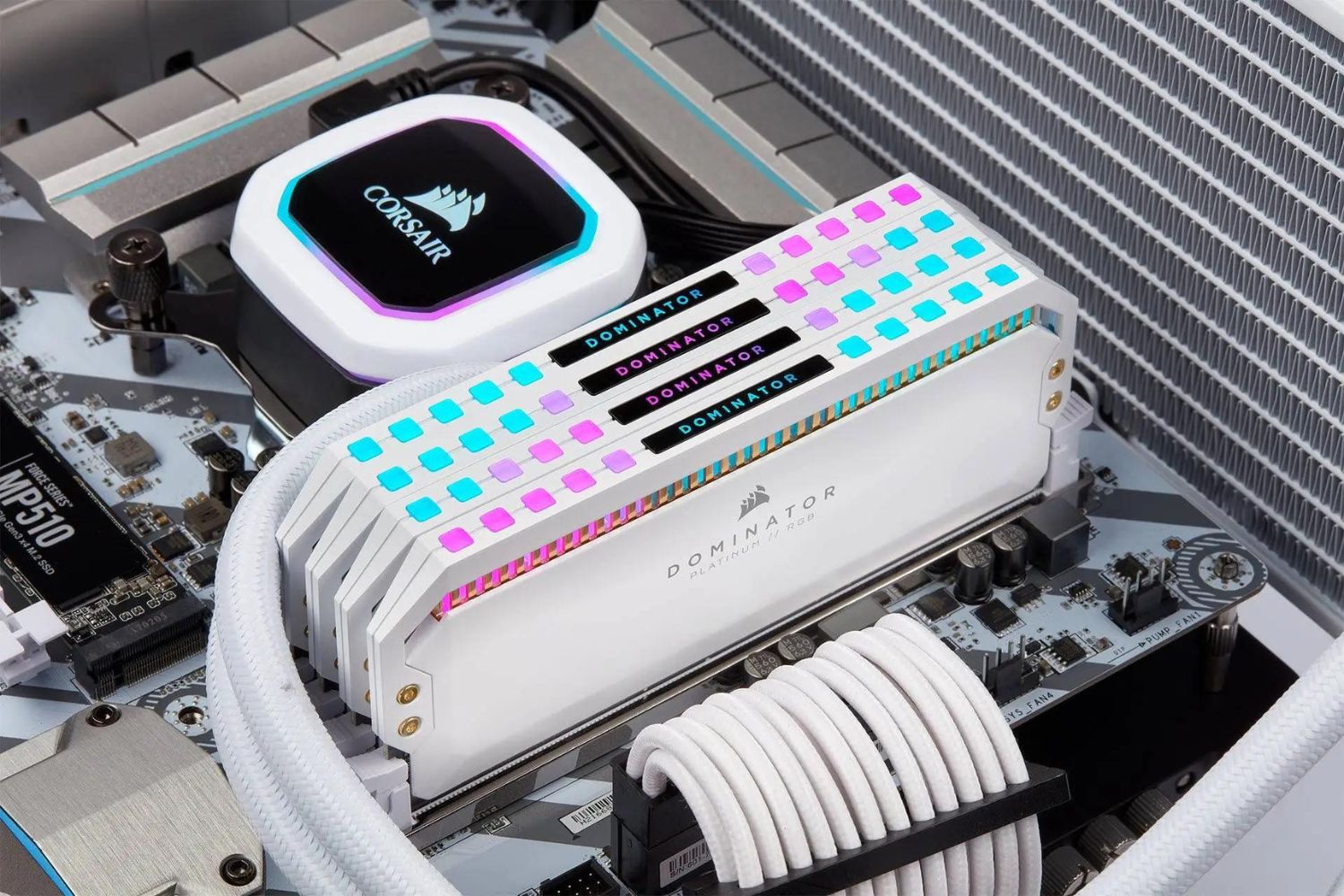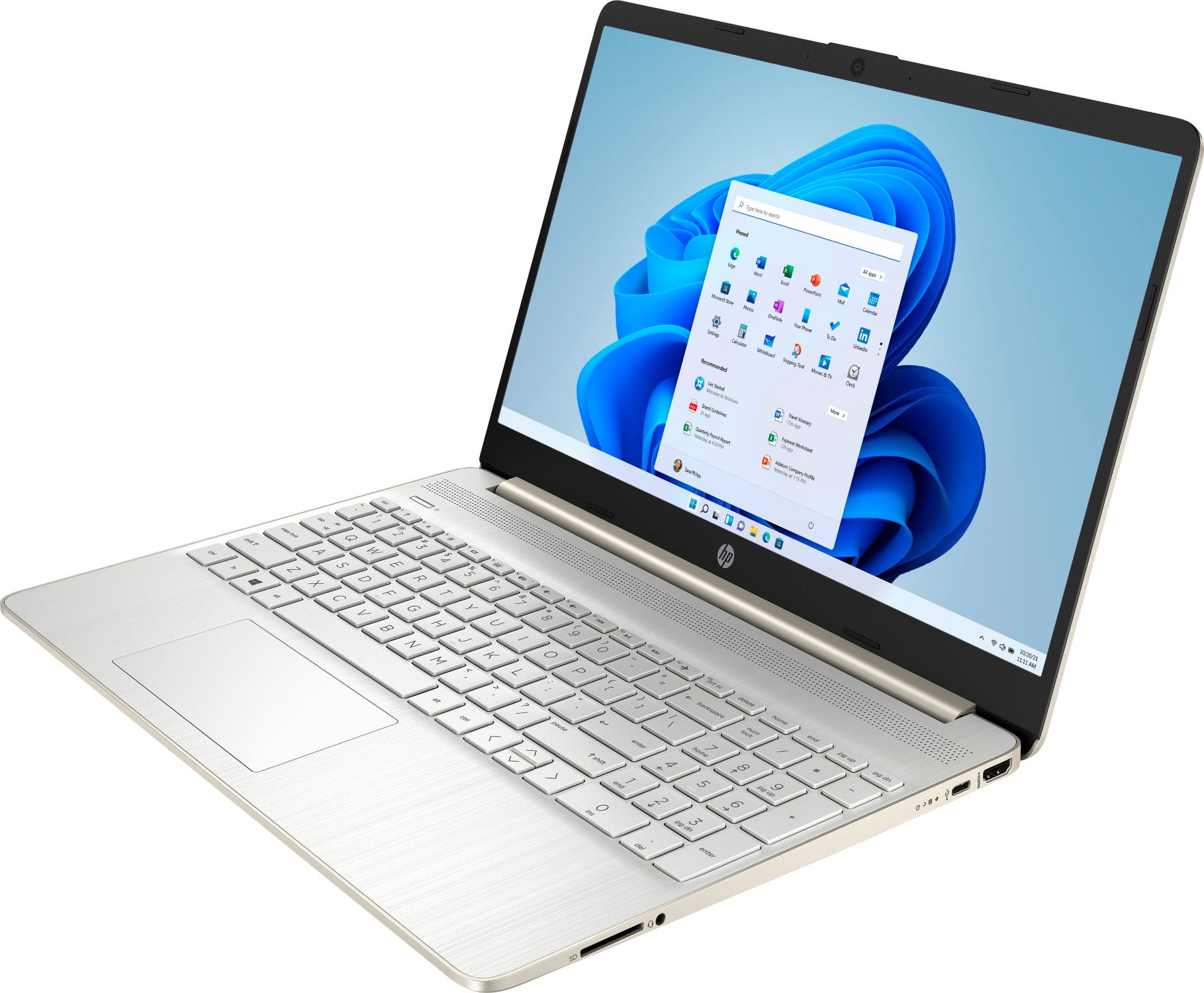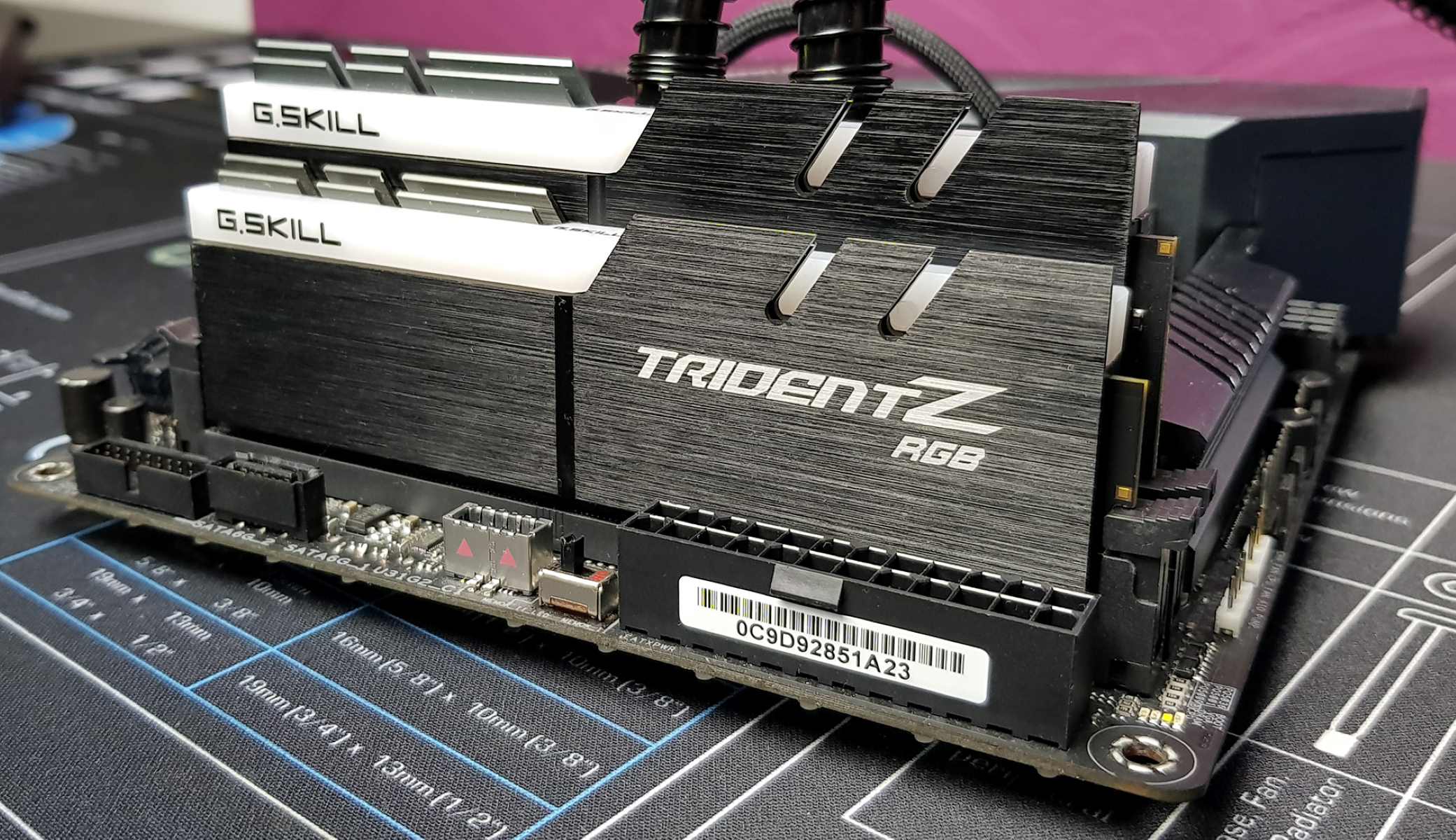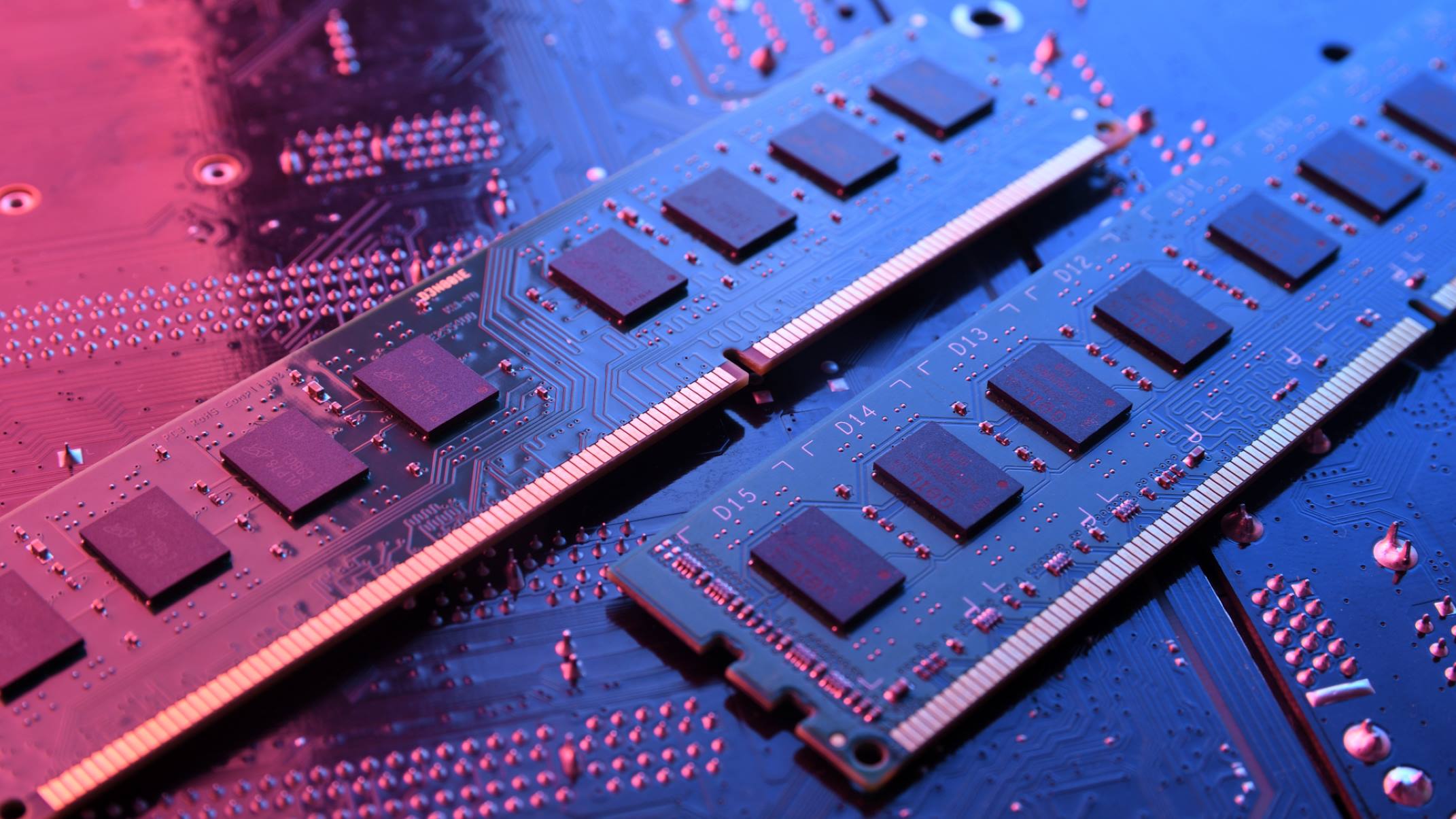Introduction
Welcome to the world of high-speed computing! As technology continues to advance at an unprecedented pace, the need for faster and more efficient memory solutions becomes increasingly crucial. One such breakthrough in memory technology is the introduction of DDR5 RAM.
DDR5 RAM, or Double Data Rate 5 RAM, is the latest generation of random-access memory (RAM) that offers significant improvements in speed, efficiency, and capacity compared to its predecessors. It represents a major leap forward in memory performance and has the potential to revolutionize the way we interact with computers and other electronic devices.
With DDR5 RAM, users can expect faster data transfer rates, lower latencies, and enhanced multitasking capabilities. These advancements are particularly beneficial for power-hungry applications such as gaming, graphic design, video editing, and data-intensive tasks. DDR5 RAM is designed to meet the demands of modern computing, enabling faster data processing, smoother multitasking, and an overall improved user experience.
Now you might be wondering, why is DDR5 RAM such a big deal? How does it differ from previous generations, and why should you consider upgrading to DDR5 RAM? In this article, we will explore the answers to these questions and delve into the factors that impact DDR5 RAM speeds. We will also take a look at the latest advancements in DDR5 RAM technology and compare the speed capabilities of different brands.
But before we dive deeper, it’s important to understand the fundamental principles and benefits of DDR5 RAM.
What is DDR5 RAM?
DDR5 RAM, as mentioned earlier, stands for Double Data Rate 5 Random Access Memory. It is the latest iteration of memory technology that is used in computers, servers, gaming consoles, and other electronic devices. DDR5 RAM builds upon the success and advancements of its predecessors, such as DDR4, to offer even faster and more efficient data transfer capabilities.
DDR5 RAM operates on a double-pumped architecture, meaning it can transfer data on both the rising and falling edges of the clock signal. This allows for higher data transfer rates and increased bandwidth compared to previous generations. DDR5 RAM also employs a higher bus frequency and increased data prefetching, further enhancing its performance.
One of the key advantages of DDR5 RAM is its increased capacity. DDR5 RAM modules can support much larger memory capacities compared to DDR4, making them ideal for memory-intensive applications and scenarios that require the handling of large datasets. This increased capacity ensures smoother multitasking and improved system responsiveness.
DDR5 RAM also introduces new power-saving features, such as Targeted Speeds and On-Die Termination (ODT). These features help optimize power consumption by adjusting the voltage and termination settings based on specific workload requirements. This not only reduces power consumption but also helps prolong the lifespan of the memory modules.
Another important aspect of DDR5 RAM is its support for Error Correction Code (ECC), which allows for the detection and correction of memory errors. This is particularly vital for applications that require high reliability and data integrity, such as scientific simulations, financial systems, and enterprise-level computing.
Overall, DDR5 RAM represents a significant step forward in memory technology. It brings substantial improvements in speed, capacity, power efficiency, and error correction capabilities, making it an ideal choice for both gaming enthusiasts and professionals who require lightning-fast performance and reliable memory solutions.
Why is DDR5 RAM important?
DDR5 RAM is an important development in the world of memory technology due to several key reasons. Let’s explore why DDR5 RAM holds significance in modern computing:
1. Enhanced Performance: DDR5 RAM offers significantly faster data transfer rates and reduced latencies compared to previous generations. This translates to improved system performance, faster application loading times, smoother multitasking, and seamless gaming experiences. Users can expect a noticeable boost in overall system responsiveness and the ability to handle resource-intensive tasks with ease.
2. Increased Capacity: DDR5 RAM modules support larger memory capacities, allowing for more data to be stored and accessed at any given time. This is especially beneficial for memory-intensive applications like video editing, 3D rendering, virtualization, and scientific simulations. With DDR5 RAM, users can work with larger datasets, run multiple virtual machines concurrently, and experience smoother workflow efficiency.
3. Future-proof Technology: DDR5 RAM is designed with future technologies and advancements in mind. It provides a solid foundation for upcoming hardware and software innovations, ensuring compatibility and efficient performance for years to come. As new generations of processors, graphics cards, and applications emerge, DDR5 RAM will be better equipped to support their demanding requirements.
4. Power Efficiency: DDR5 RAM introduces several power-saving features, such as Targeted Speeds and On-Die Termination (ODT). These features help optimize power consumption based on workload requirements, resulting in reduced energy usage and lower operating temperatures. Improved power efficiency not only helps conserve energy but also prolongs the lifespan of the memory modules.
5. Error Correction Capabilities: DDR5 RAM includes Error Correction Code (ECC) support, which allows for the detection and correction of memory errors. This is especially critical for professional environments and mission-critical applications where data integrity is paramount. ECC helps prevent data corruption and ensures reliable operation, making DDR5 RAM an attractive choice for enterprise-level systems.
6. Gaming Performance: For gamers, DDR5 RAM brings immense benefits. The increased data transfer rates and reduced latencies provide a significant performance boost, resulting in smoother gameplay, faster loading times, and more immersive experiences. With DDR5 RAM, gamers can push their systems to the limit and enjoy high-frame-rate gaming without any bottlenecks.
Overall, DDR5 RAM is important because it raises the bar in terms of performance, capacity, power efficiency, and data integrity. Whether you’re a gamer, content creator, or professional user, DDR5 RAM offers the potential to take your computing experience to new heights.
Factors that Impact DDR5 RAM Speed
While DDR5 RAM is known for its fast data transfer rates, several factors can influence its speed and overall performance. Understanding these factors is crucial for optimizing the performance of DDR5 RAM modules. Let’s explore some of the key factors that impact DDR5 RAM speed:
1. Clock Speed: The clock speed of DDR5 RAM determines how quickly data can be transferred between the memory module and the processor. Higher clock speeds result in faster data transfer rates and improved overall performance. It is important to note that the clock speed of DDR5 RAM is not the same as the memory frequency mentioned in the module’s specifications. The memory frequency is often double the clock speed due to the DDR (Double Data Rate) design.
2. CAS Latency (CL): CAS Latency refers to the delay between the memory receiving a command and actually delivering the requested data. Lower CAS latency values indicate faster data retrieval, resulting in improved memory performance. When selecting DDR5 RAM, it’s crucial to consider the CAS latency in addition to the clock speed to attain optimal performance for your specific needs.
3. Timings and Sub-timings: DDR5 RAM has various timings and sub-timings, including tRCD (RAS to CAS Delay), tRP (Row Precharge Time), and tRAS (Row Active Time). These timings determine the specific delays and intervals for different memory operations. Balancing and optimizing these timings can result in increased DDR5 RAM performance. However, modifying these settings typically requires advanced knowledge and should be done cautiously to avoid system instability.
4. Voltage: DDR5 RAM modules operate at different voltage levels, typically ranging from 1.1V to 1.5V. Higher voltages can provide more stability when overclocking RAM, but they may also generate additional heat and increase power consumption. It is essential to ensure that the motherboard and processor can support the voltage required by the DDR5 RAM modules to avoid compatibility issues or damage to the components.
5. System Configuration and Compatibility: The overall system configuration and compatibility play a significant role in DDR5 RAM performance. Factors such as the motherboard’s memory controller, the processor’s memory speed support, and the BIOS settings can affect the speed and stability of DDR5 RAM. It is important to ensure that all components are compatible and properly configured to maximize DDR5 RAM performance.
6. Cooling and Heat Dissipation: DDR5 RAM modules can generate heat during operation, especially when running at higher speeds and voltages. Efficient cooling solutions, such as heatspreaders or liquid cooling, can help dissipate heat and prevent thermal throttling. Optimal thermal management ensures stable performance and longevity of DDR5 RAM modules.
7. Overclocking: Overclocking DDR5 RAM involves manually adjusting the settings to run the RAM at higher speeds than the default specifications. Overclocking can potentially increase the DDR5 RAM’s performance but should be done cautiously, as it could also lead to system instability or data corruption if not done properly. It is important to follow safe overclocking practices and thoroughly test the system’s stability after making any adjustments.
By considering these factors and optimizing the settings accordingly, users can ensure that their DDR5 RAM modules perform at their maximum potential, delivering the desired speed and responsiveness for their computing needs.
Latest Advancements in DDR5 RAM Technology
DDR5 RAM technology continues to evolve, with several advancements pushing the boundaries of memory performance. These advancements aim to deliver even faster speeds, higher capacities, and improved efficiency. Let’s delve into some of the latest developments in DDR5 RAM technology:
1. Speed Increases: One of the notable advancements in DDR5 RAM technology is the significant increase in data transfer rates. DDR5 RAM modules offer faster speeds compared to their predecessors, enabling quicker access to data and reduced latency. With higher clock speeds and improved memory controller designs, DDR5 RAM provides a substantial boost to overall system performance.
2. Increased Capacities: DDR5 RAM introduces larger memory capacities compared to previous generations. With the ability to support up to 128GB per module, DDR5 RAM allows for greater memory expansion and handling of memory-intensive applications. This increased capacity caters to the growing demands of data-driven computing, enabling seamless multitasking and smoother execution of resource-heavy tasks.
3. On-Die ECC: DDR5 RAM incorporates On-Die Error Correction Code (ECC), a feature that helps detect and correct memory errors within the RAM module itself. The integration of ECC on the memory chip reduces overall system latency and improves memory reliability. This is particularly valuable in critical applications where data integrity is paramount, such as scientific research, financial transactions, and enterprise-level computing.
4. Improved Energy Efficiency: DDR5 RAM technology introduces various power-saving enhancements to reduce energy consumption. Targeted Speeds and On-Die Termination (ODT) are features that optimize power usage by adjusting voltage levels and termination settings based on workload requirements. By intelligently managing power, DDR5 RAM modules deliver improved energy efficiency without compromising performance.
5. Advancements in Signal Integrity: DDR5 RAM technology incorporates advanced techniques to enhance signal integrity and reduce interference. New equalization and error detection mechanisms address signal degradation issues, ensuring reliable data transmission at higher speeds. These advancements result in better overall system stability and reduce the chances of data corruption or transmission errors.
6. Memory Management: DDR5 RAM technology introduces new features that enhance memory management capabilities. For example, Memory In-Band ECC (MIBECC) enables real-time data protection by extending ECC to the entire memory interface. This provides an additional layer of error correction and enhances data integrity while maintaining optimal memory performance.
7. Future Potential: DDR5 RAM technology offers considerable growth potential with further advancements on the horizon. As manufacturers continue to refine the technology and develop new memory architectures, we can anticipate even faster speeds, larger capacities, and improved efficiency. This ongoing progress ensures that DDR5 RAM remains at the forefront of memory technology, catering to the evolving needs of high-performance computing.
The latest advancements in DDR5 RAM technology lay the foundation for more powerful and efficient memory solutions. With faster speeds, larger capacities, improved energy efficiency, and enhanced error correction, DDR5 RAM is poised to revolutionize the performance capabilities of computing systems.
Comparison of DDR5 RAM Speeds across Different Brands
DDR5 RAM, being a new technology, is offered by various manufacturers, each bringing their own variations and performance capabilities to the market. When comparing DDR5 RAM speeds across different brands, several factors come into play. Let’s explore some of the key considerations and compare the speed offerings from different brands:
1. Clock Speed: Clock speed is a crucial factor that determines the overall performance of DDR5 RAM. Different brands offer DDR5 RAM modules with varying clock speeds, ranging from conservative speeds to higher overclocked options. Brands like Corsair, G.Skill, Kingston, and Crucial, among others, provide DDR5 RAM modules with clock speeds that cater to different performance requirements.
2. Latency Timings: Another important aspect to consider is the latency timings of DDR5 RAM. Lower latency timings indicate faster response and data retrieval from the memory module. Brands may offer DDR5 RAM with different latency timing configurations, providing options for users to prioritize lower latency or higher clock speeds based on their needs.
3. Module Capacities: DDR5 RAM modules come in various capacities, ranging from 8GB to as high as 128GB. Different brands offer a range of capacities to cater to different computing requirements. Users can choose the right DDR5 RAM capacity based on their system’s needs, such as gaming, content creation, or data-intensive workloads.
4. Overclocking Potential: Overclocking DDR5 RAM can unlock even higher speeds and performance. When comparing DDR5 RAM brands, it is essential to consider their overclocking potential. Some brands may offer DDR5 RAM modules specifically designed for enthusiasts and overclocking enthusiasts, with higher speed profiles and tighter timings that allow for more aggressive overclocking.
5. Brand Reputation and Quality: It is important to consider the reputation and quality of the brand when comparing DDR5 RAM speeds. Established brands with a history of producing reliable and high-performance memory modules, such as Corsair, Kingston, G.Skill, Crucial, and Team Group, often offer DDR5 RAM modules that have undergone rigorous testing and quality control processes.
Ultimately, the choice of DDR5 RAM brand and speed depends on specific requirements, budget, and intended usage. It’s advisable to consider factors like clock speed, latency timings, module capacities, overclocking potential, and brand reputation when making a decision. Conducting thorough research and reading reviews can help users determine the best DDR5 RAM option for their specific needs.
It is worth noting that the DDR5 RAM market is still evolving, and new product releases and advancements are expected in the coming months and years. Therefore, staying updated with the latest offerings from different brands is essential for making an informed decision and ensuring optimal performance for your computing system.
Testing and Benchmarking DDR5 RAM Speed
When it comes to assessing the speed and performance of DDR5 RAM, rigorous testing and benchmarking methodologies are essential. These tests help evaluate the capabilities of DDR5 RAM modules and provide meaningful comparisons between different brands and configurations. Let’s explore some common methods used for testing and benchmarking DDR5 RAM speed:
1. Synthetic Benchmarking: Synthetic benchmarking tools, such as AIDA64, PassMark, and Sandra, are often used to measure the theoretical performance of DDR5 RAM modules. These tools simulate various computing scenarios and stress the memory subsystem, providing benchmarks for memory read, write, and copy speeds, as well as latencies. Synthetic benchmarks offer a standardized and repeatable approach to evaluate DDR5 RAM speed and performance.
2. Real-World Applications: Testing DDR5 RAM speed in real-world scenarios involves running memory-intensive applications and measuring their performance. Tasks like video encoding, 3D rendering, scientific simulations, and gaming can be used to assess how DDR5 RAM handles resource-intensive workloads. By measuring the execution times of these applications, the impact of DDR5 RAM speed on overall system performance can be evaluated.
3. Memory Stress Testing: Memory stress testing tools, such as MemTest86 and HCI Memtest, are commonly used to evaluate the stability of DDR5 RAM modules. These tests put the RAM modules under heavy loads for extended periods to identify any potential stability issues, such as errors or crashes. Memory stress testing ensures that DDR5 RAM can operate at its advertised speeds reliably without encountering issues.
4. Overclocking Testing: Overclocking DDR5 RAM involves pushing the memory modules beyond their rated specifications to achieve higher speeds. When testing DDR5 RAM for overclocking, it is essential to gradually increase the clock speeds and test for stability using stress tests. Benchmarking tools like Prime95 and AIDA64 can be used to assess the stability of DDR5 RAM when overclocked, ensuring that it can maintain stable operation under higher loads.
5. Comparative Testing: Comparative testing involves benchmarking DDR5 RAM against different brands, configurations, or generations to determine performance differences. By running identical tests on multiple DDR5 RAM modules, users can directly compare speed, latency, and overall performance. This helps in identifying the best-performing DDR5 RAM modules for specific use cases and provides valuable insights into the performance advantages of certain brands or configurations.
When conducting DDR5 RAM speed testing, it is essential to ensure accurate and consistent results by using up-to-date drivers, optimized BIOS settings, and stable system configurations. Additionally, it’s crucial to gather results from multiple tests and account for variations in performance due to system components, firmware updates, and software optimizations.
By employing a combination of synthetic benchmarking, real-world application testing, and stress testing, users can obtain a comprehensive understanding of the speed and performance capabilities of DDR5 RAM. These tests enable users to make informed decisions and choose the DDR5 RAM modules that align with their performance requirements and computing needs.
The Fastest DDR5 RAM Available in the Market
As the DDR5 RAM market continues to grow, different brands are pushing the boundaries of performance and speed. While individual needs and preferences may determine the “fastest” DDR5 RAM for a specific use case, there are some notable options available that offer exceptional speed and performance. Let’s explore some of the top contenders for the fastest DDR5 RAM available in the market:
1. Corsair Dominator Platinum RGB: Corsair is renowned for producing high-quality memory modules, and their Dominator Platinum RGB DDR5 RAM is no exception. With clock speeds that go up to 6400MHz and low CAS latency timings, this RAM offers exceptional performance. It also features a sleek design with customizable RGB lighting, making it a popular choice among enthusiasts and gamers.
2. G.Skill Trident Z Royal Elite: G.Skill’s Trident Z Royal Elite DDR5 RAM is known for its stunning design and top-notch performance. With clock speeds reaching 6400MHz and low latency timings, this RAM delivers unmatched speed and responsiveness. The Trident Z Royal Elite series also features a crystal-like light refraction effect, adding a touch of elegance to any system.
3. Kingston Fury Renegade: Kingston’s Fury Renegade DDR5 RAM is designed for high-performance computing. With clock speeds up to 6600MHz, this RAM offers impressive speed and low latency. It also comes equipped with stylish heatspreaders to ensure efficient heat dissipation, maintaining consistent performance even under heavy workloads.
4. Crucial Ballistix Max: Crucial’s Ballistix Max DDR5 RAM is built for extreme performance. With speeds that can go up to 6943MHz, this RAM delivers unparalleled speed and response times. It also features customizable RGB lighting and a robust heatsink design to ensure optimal thermal management during intense usage scenarios.
5. TeamGroup Elite Series: TeamGroup’s Elite series of DDR5 RAM offers high-speed performance at a competitive price point. With clock speeds reaching up to 6500MHz, this RAM provides excellent speed and responsiveness. The Elite series also comes with a sleek and minimalistic design, making it a versatile option for various system configurations.
It’s important to note that the definition of “fastest” may vary depending on specific requirements and use cases. While the options mentioned above offer impressive performance, it’s essential to consider factors such as clock speeds, latency timings, and overall system compatibility when choosing DDR5 RAM.
As technology continues to evolve, it is important to stay updated with new DDR5 RAM releases and advancements in the market. Speeds and performance capabilities are constantly improving, with new options emerging regularly.
When selecting DDR5 RAM, it is advisable to consider your specific needs, such as gaming, content creation, or professional workloads. By consulting reviews, conducting research, and matching the performance specifications to your requirements, you can find the fastest DDR5 RAM that suits your computing needs.
Conclusion
DDR5 RAM represents a significant leap forward in memory technology, offering faster speeds, increased capacities, improved energy efficiency, and enhanced data integrity. With its higher data transfer rates and lower latencies, DDR5 RAM provides a substantial performance boost for various computing applications.
In this article, we explored the fundamentals of DDR5 RAM, including its architecture, benefits, and impact on system performance. We discussed factors that influence DDR5 RAM speed, such as clock speed, latency timings, and voltage settings. We also highlighted the latest advancements in DDR5 RAM technology, which contribute to its increased performance and efficiency.
Furthermore, we compared DDR5 RAM speeds across different brands, allowing users to make informed decisions based on their specific needs and preferences. Testing and benchmarking methods were also discussed, providing insights into the evaluation and validation of DDR5 RAM speed and performance.
Lastly, we highlighted some of the fastest DDR5 RAM options available in the market, with brands like Corsair, G.Skill, Kingston, Crucial, and TeamGroup offering exceptional performance and speed.
DDR5 RAM represents the future of memory technology, catering to the demands of modern computing and providing users with a significant boost in performance and efficiency. Whether you’re a gamer, content creator, or professional user, upgrading to DDR5 RAM can greatly enhance your computing experience.
As the DDR5 RAM market evolves, it’s essential to stay updated with the latest developments, product releases, and advancements. By considering factors such as clock speeds, latency timings, module capacities, and brand reputation, you can choose the DDR5 RAM that best suits your needs.
So, embrace the power of DDR5 RAM and unlock a new level of performance and responsiveness in your computing endeavors!







